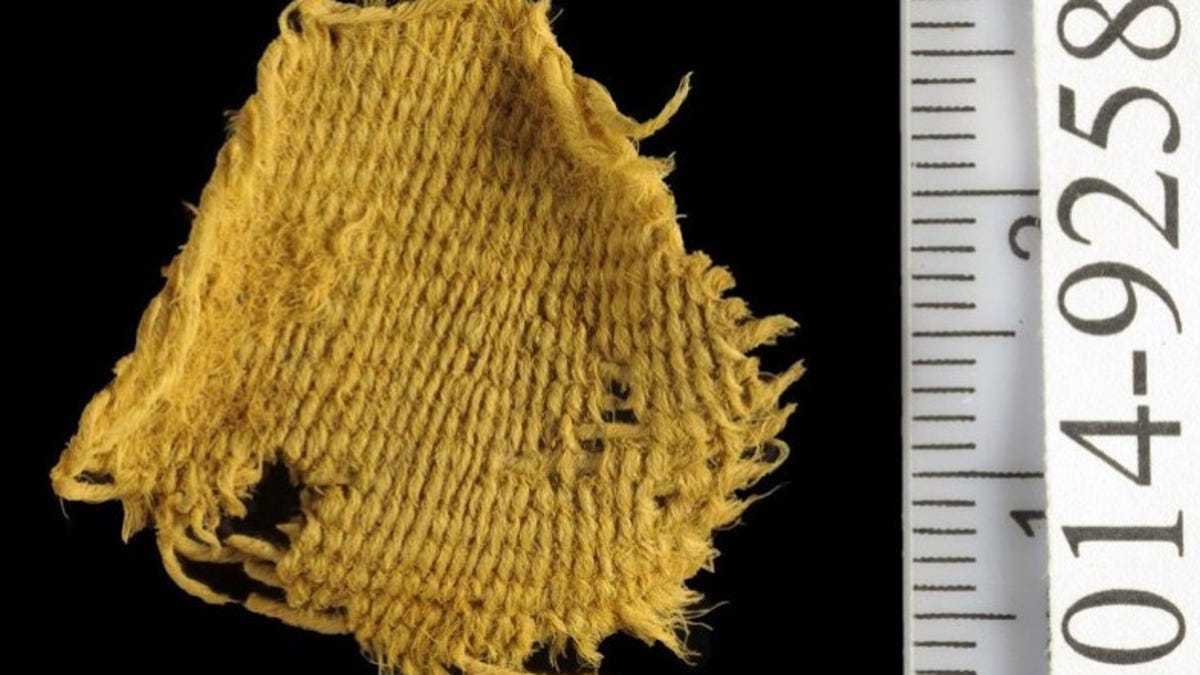Fabrics unearthed from King David's time offer peek at biblical fashion
Arid conditions in Israel's desert copper mines allow a treasure trove of ancient textiles to survive. Talk about vintage clothes.
What would have graced the cover of Vogue in ancient Israel?
An extensive collection of fabrics uncovered in the country's southern desert copper mines offers a tangible glimpse. The textiles, excavated by a team from Tel Aviv University, mark the first discovery of materials from the era of Kings David and Solomon some 3,000 years ago, according to Israel's Foreign Ministry.
"No textiles have ever been found at excavation sites like Jerusalem, Megiddo and Hazor, so this provides a unique window into an entire aspect of life from which we've never had physical evidence before," Erez Ben-Yosef, the Tel Aviv University archaeologist who led the excavation in late January and February, said in a statement Wednesday. "We found fragments of textiles that originated from bags, clothing, tents, ropes and cords."
Far from the drab undyed sheep's wool of many a biblical reenactment, the fabrics vary in color, weaving and ornamentation to present a more complex, runway-friendly picture of the day's fashion. One wool fragment is dyed red and blue, for example, with natural animal hair of other colors woven into decorative bands that would have no doubt looked chic skimming a pair of bygone Birkenstocks.
The fabrics, found in Timna, in Israel's southern Arava Valley, also offer insight into the trade practices and regional economy of the day. Many of the textiles, including linen, were woven far from the copper mines, some of which are thought to have been active during the reign of King Solomon, around the 10th century BCE. That linen was imported, likely from Northern Israel or the Jordan Valley, the researchers say, bolsters the picture of an active copper production culture in need of daily goods that existed in Israel's desert to provide metal for valuable tools and weapons.
"The possession of copper was a source of great power, much as oil is today," Ben-Yosef said. "If a person had the exceptional knowledge to create copper, he was considered well-versed in an extremely sophisticated technology."
The fabric discoveries are part of the larger Central Timna Valley Project, an ongoing multidisciplinary effort started in 2012 to explore the archaeological record of the southern Arava's copper mining and smelting sites. Arid conditions in the area have helped organic materials such as fabric and leather survive. Give it a few more years. With the cyclical nature of fashion, we might just see Davidian garb on the catwalk.


